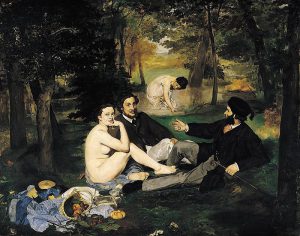Sex
How Social Constructionism Created the Sex Addiction Model
And unfortunately, that problem is usually one which is socially constructed, rather than scientifically valid.

Imagine it is the year 1965, in frozen Winnipeg, Manitoba. Two twin boys are scheduled for routine circumcisions. Using an unconventional practice known as cauterization, one of the boy’s penises was accidentally burned beyond repair. Dispirited and confused, the boys’ parents were watching late night television one evening when a charming, well-spoken psychologist appeared on the air. Sexologist John Money claimed he had discovered, through his “theory of gender neutrality,” that gender was a complete social construct, created entirely through social learning. Emboldened, the parents contacted Dr. Money, who ordered sex reassignment surgery for the injured boy, and instructed his parents to raise him as a girl. Because this surgery occurred at such as young age, the (now) girl would never realize she had once been a boy and would live her life as a normal female.
Money touted the success of his work, publishing extensively on his triumphant results. However, eventually the truth came out. The young boy never acclimated to being a girl, and eventually as an adult sought to transition back to being a male. In 1997, the boy, now an adult named David Reimer, confided his story to sexologist Milton Diamond, who encouraged him to go public with his story. In the end, the story ended tragically. Money was disgraced, while David Reimer committed suicide in 2004, never having recovered from the trauma suffered under the hands of Dr. Money. This sad, tragic case is detailed in the wonderful book As Nature Made Him: The Boy Who Was Raised as a Girl for anyone looking for more information and a painful, yet powerful read.
Let’s move now to early 1970s Los Angeles, California. UCLA researchers George Rekers and Ivar Lovaas pioneered an experimental new type of treatment to literally “knock out” the effeminate behavior of young “sissy boys” through the use of severe corporal punishment. Like Money before them, they triumphantly published their successful findings in 1974 in the Journal of Abnormal Child Psychology under the title “The Behavioral Treatment of a ‘Transsexual’ Preadolescent Boy.” They concluded, “This treatment holds promise for correcting pathological gender identity development and for relieving the associated emotional adjustment problems.” This “successfully” treated boy, now a grown man of 38 named Kirk Murphy, committed suicide in 2003 due to feeling “broken” by his participation in the research.
These are just two examples of the horrors of a scientific enterprise influenced by a purely social constructionist ideology. Despite all this, social constructionism is still alive and well, influencing both the social sciences and public policy. Take a look at this article for example about an elementary school teacher who pushes her female students to play with Legos, while forbidding her male students to do the same, all in the name of “gender equity.”
So what does all of this have to do with sex addiction? Plenty. Sociologist Janice Irvine, in her book Disorders of Desire: Sexuality and Gender in Modern American Sexology meticulously details the rise of the social construction of desire to the same 1970s period in which all of these other troubling experiments were conducted. In a chapter appropriately entitled “Regulated Passions,” she persuasively argues that both “inhibited sexual desire,” pushed by Helen Singer Kaplan and sex addiction were both offsprings of the cultural belief that sexuality is a social construct, one that can be controlled, modified, and neatly packaged according to the social norms and mores of the time. Indeed, the very first sex addiction 12-step group, Sex and Love Addicts Anonymous (SLA) met in Boston in 1977.
In the case of sex addiction, we have a perfect storm of psychiatrists, psychotherapists, and other assorted mental health professionals trying to fit sexual behavior into a socially constructed paradigm of monogamy, pair bonding, and yes, even intimacy. Famed sociologist Anthony Giddens, in his book The Transformation of Intimacy: Sexuality, Love and Eroticism in Modern Societies carefully points out that the notion of romantic love and intimacy dates back only to the late 1700s. In this analysis, the author concludes, “It is an interesting idea that romantic love is a product of modernity – or, at least, was accompanied with the process of modernization. Giddens assumes that romantic love ‘began to make its presence felt from the late eighteenth century onward’ (39) and that it is associated with ‘romance,’ not only as a literature genre of novel but also as a form of storytelling in which self is narrated. For Giddens, in the pre-modern era there was no intimacy in love relationship. Romantic love based upon intimacy was impossible in the social environment where ‘most marriages were contracted, not on the basis of mutual sexual attraction, but economic circumstance'(38). It is within this socially constructed narrative of romantic love that the sex addiction model was hatched and grown.
Now that we’ve taken a look at what social constructionism has to offer us, let’s now take a closer look at science. My colleague Chris Ryan, in his book Sex at Dawn, makes a very compelling case for the idea that prehistoric people were much more sexually active and “promiscuous” than we may have realized. He details a lot of facts including the size and shape of the human penis, research demonstrating the real case for ‘sperm wars‘ and concealed ovulation as all prime examples of evidence towards non-monogamy. These are all theories. Compelling theories, but theories nonetheless. However, we also have some very concrete DNA evidence to point the way.
According to famed psychologist Roy Baumeister, DNA research indicates that historically 80% of women have reproduced, while only 40% of men have managed to do same. In other words, throughout history, most men have not managed to reproduce. Another study found that something happened about 8,000 years ago in which 17 women reproduced for every one man! Yes, 17 to 1! Such research seems to indicate that ancient society was polygynous (much like gorillas), while others such as Ryan argue in favor of polyandry (like bonobos), but these controversies, although certainly important, still agree on one salient point: human civilization has historically been non-monogamous.

How does sex addiction fit into this narrative? If homo sapiens were truly monogamous creatures, we would sure be the outliers when it comes to the animal kingdom. According to this article, of about 5,000 total mammalian species, only 3-5% are “socially monogamous,” which means they pair bond. However, when these species are examined for their DNA, researchers find that only 5 total species in the entire animal kingdom are truly monogamous, or “genetically monogamous,” meaning they never have sex with other animals outside of their pair bond. Here are the five purely monogamous animals: the California mouse, Kirk’s dik-dik (a small antelope), the Malagasy giant jumping rat, pack-living coyotes, and the fifth, newly discovered one, the owl monkey. Mice, rats, and dik-diks, oh my!
Coming back to the issue of sex addiction, we are still left with the unanswered question of what kind of sex and at which frequency is sex normal. Unfortunately, due its social constructionist and morally biased lenses, the sex addiction model has no answers. Look, I know there are people out there who feel out of control or compulsive with their sexuality. Research indicates that for these folks, other issues, ranging from OCD to religiosity, to yes, high sex drive are more correlated to their subjective experiences than some actual kind of addiction process. And if the sex addiction folks just stuck with these sort of clients, they would never have been able to manufacture an entire sex addiction industry, complete with dozens of ultra expensive inpatient treatment facilities. The only way a treatment becomes an industry is when its scope creeps to include anyone who is having the kind of sex that someone (either the individual or family member) deems to be a problem.
And unfortunately, that problem is usually one which is socially constructed, rather than scientifically valid.
This article was originally published at Psychology Today.





